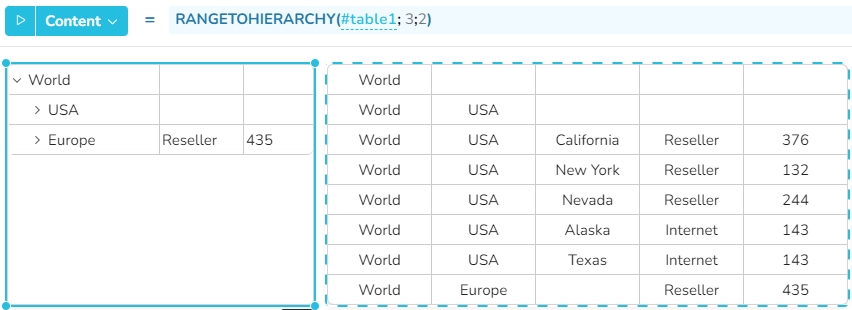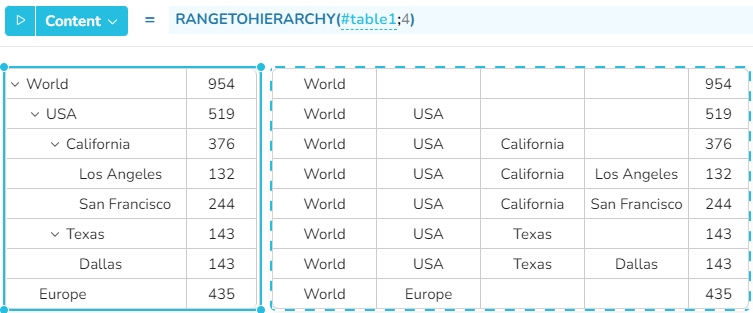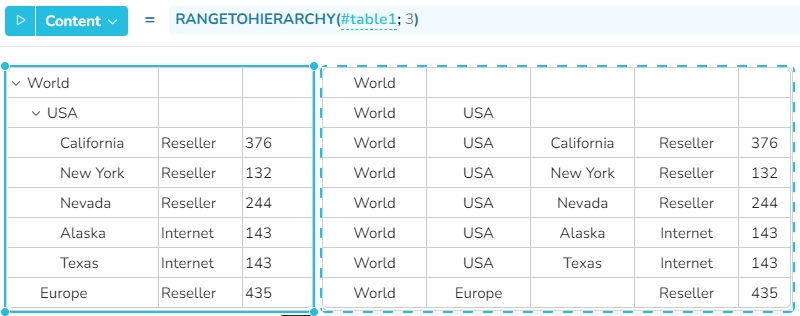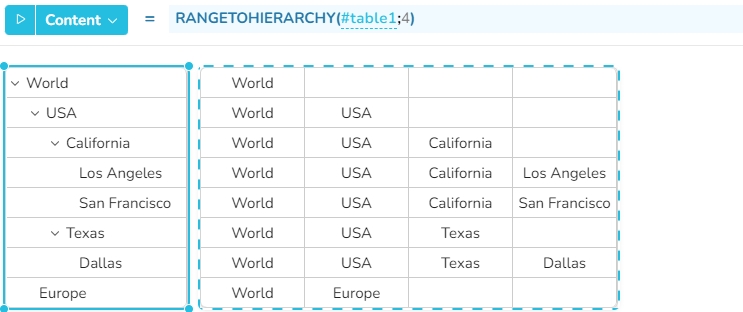RANGETOHIERARCHY
Converts a range to a hierarchy.
Syntax
RANGETOHIERARCHY(range; numLevels; numExpandLevels)
range - the range containing the hierarchy information - Value type: range
numLevels - the number of columns at the beginning of range defining the hierarchy - Value type: number
numExpandedLevels - the number of levels of the hierarchy which should be expanded - Value type: number (optional, default value: numLevels)
aggregationType - specifies how empty values in the additional columns of the hierarchy should be aggregated - Value type: text (optional, default value: “none”) Possible values are:
"none" - no additional aggregation
"sum" - using the sum of the children
"min" - using the minimum value of the children
"max" - using the maximum of the children
"avg" - using the average value of the children
Return
The result is a range with
the hierarchy level in the first column
the display name in the next column (extracted from the first numLevels columns of range)
all remaining columns of range
all levels up to numExpandedLevels are expanded, all other levels are collapsed
Examples
In the following examples, the widget on the left is a table widget of type "Hierarchy".
Example 1 - The whole table is used as hierarchy.
Example 2 - like example 1, but with an additional column containing values for the hierarchy.
Example 3 - The hierarchy is only defined by the first 3 columns. The remaining 2 columns are added to each row of the hierarchy.
Example 4 - Parameter 3 specifies that only the first two levels of the hierarchy are expanded by default.




